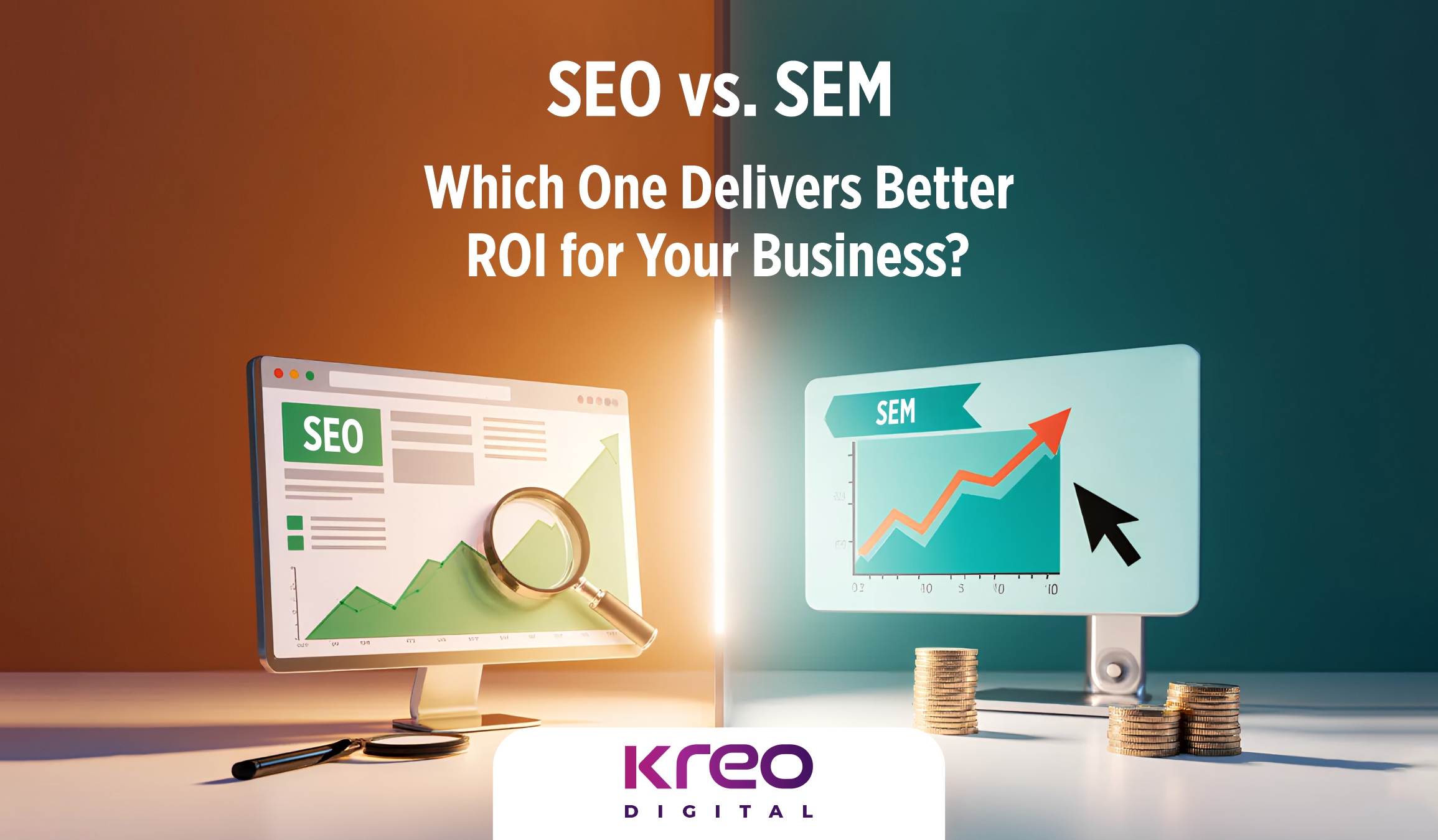In the digital world, visibility is everything. But when it comes to achieving it, businesses often face a common question — should we invest in SEO or SEM?
Both aim to boost your online presence, but their approaches, timelines, and ROI differ significantly. Let’s break down the difference and help you decide which delivers better value for your business.
What Is SEO?
Search Engine Optimization (SEO) is the process of improving your website to rank organically on search engines like Google. It involves:
- Keyword research and on-page optimization
- Technical improvements (speed, mobile-friendliness, indexing)
- Content creation and link building
The biggest advantage of SEO is long-term visibility. Once your site earns authority, organic traffic can continue flowing without ongoing ad spend.
Pros of SEO:
- Builds long-term trust and credibility
- Cost-effective over time
- Consistent, compounding results
Cons:
- Takes time to show results (3–6 months or more)
- Requires regular updates and maintenance
What Is SEM?
Search Engine Marketing (SEM), often called paid search or PPC (Pay-Per-Click), involves paying for visibility on search engines. You bid on keywords, and your ads appear at the top of search results — instantly.
Pros of SEM:
- Immediate visibility and traffic
- Highly measurable — easy to track ROI
- Allows precise targeting (location, device, time, audience)
Cons:
- Costs rise with competition
- Traffic stops when you stop paying
- Requires constant monitoring and optimization
SEO vs. SEM: Key Differences
| Aspect | SEO | SEM |
| Cost | Time & expertise investment | Direct ad spend |
| Timeframe | Long-term results | Instant visibility |
| Sustainability | Continuous returns over time | Short-term gains |
| Click Cost | Free (organic) | Paid per click |
| Best For | Building credibility & brand authority | Testing offers, fast lead generation |
Which One Delivers Better ROI?
The answer depends on your goals, budget, and timeline.
- Short-Term ROI: If you need quick leads or are launching a time-sensitive campaign, SEM delivers immediate results. You can measure conversions, test messaging, and scale fast.
- Long-Term ROI: If your goal is sustainable traffic, SEO offers better ROI over time. While initial costs (content, technical fixes) may be higher, organic visibility compounds without ongoing ad costs.
Many businesses find that SEM fuels early traction, while SEO sustains growth — creating a healthy balance between short-term performance and long-term value.
The Smartest Strategy: Combine Both
Instead of choosing one, the most effective brands integrate SEO + SEM for layered visibility.
Here’s how:
- Use SEM to generate leads while your SEO strategy matures.
- Analyze your top-performing paid keywords and build SEO content around them for long-term ranking.
- Retarget visitors from paid campaigns using SEO-driven blog or landing pages to nurture them further.
This combined strategy ensures steady brand exposure — fast wins from SEM and sustainable ROI from SEO.
At Kreo Digital, we don’t believe in one-size-fits-all marketing. We analyze your business goals, audience behavior, and budget to craft a hybrid SEO + SEM strategy that maximizes every dollar spent.
Whether you’re looking for fast conversions or long-term organic growth, our experts ensure that every campaign is optimized for measurable ROI — not just clicks.
So, SEO or SEM — which is better for ROI?
The truth is, both matter. SEM gives you speed, SEO gives you strength. When you use them together strategically, you get the best of both worlds — visibility now and growth that lasts.
Ready to find the perfect balance for your business?
Book a free consultation with Kreo Digital and let’s build a strategy that turns every click into real business growth.



Leave A Comment